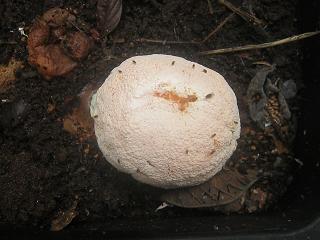Mold in the worm bin is no reason to worry much about the health of the compost worms that live in it. Especially worm compost friends who have a relatively newly started worm farm often fear for their worm flock when they find white mold on the surface of their box.
Of course I support caring for the hard working helpers but the worms are quite resilient little creatures and can handle many environmental factors in their habitat better than we imagine.
So when you discover a layer of white mold in your worm farm, you wonder if it’s okay and what you can do to get rid of the unwanted fungus infestation in your worm bin and protect your worm flock.
Fortunately, there is no need to worry about mold in the worm bin. It is a fungus that, similar to the popular forest mushrooms that are usually seen in the forest during wet autumn days, thrives in a dark and damp habitat and thus occasionally appears in worm farms.
Mold in the worm bin
The spores of mold are carried by the wind to spread the fungus and like to colonize moist materials in decomposition as they are often found in worm boxes.
As mentioned, the fungus is not harmful to the worms but on the contrary is accepted by the worms as a varied food alternative. Molds help in the decomposition of organic matter and can even help to compost the kitchen and garden waste in a worm farm faster.
Nevertheless, while mold infestation in worm compost bins does not harm the worms, it may cause allergic reactions in people who are regularly around the worm bin. There are a few ways to either completely avoid mold in worm composting or avoid human contact with the mold in the worm farm.
———-.
1) Reduce the amount of worm food put into the worm farm to give the worms a chance to eat their food before mold can form on it.
2) Accelerate the composting process in the worm bin by adding additional worms.
3) If mold has formed in the worm bin, dig a small trench of the worm substrate, add the infested material to the trench and cover it with the removed substrate.
The worms will eat the food along with the mold and turn it into nutrient-rich worm humus. If they are not allergic to mold and it does not bother them
and do not mind them appearing in your worm farm from time to time, you can simply ignore it. Your worm farm will take care of the mold and remove it completely sooner or later.


